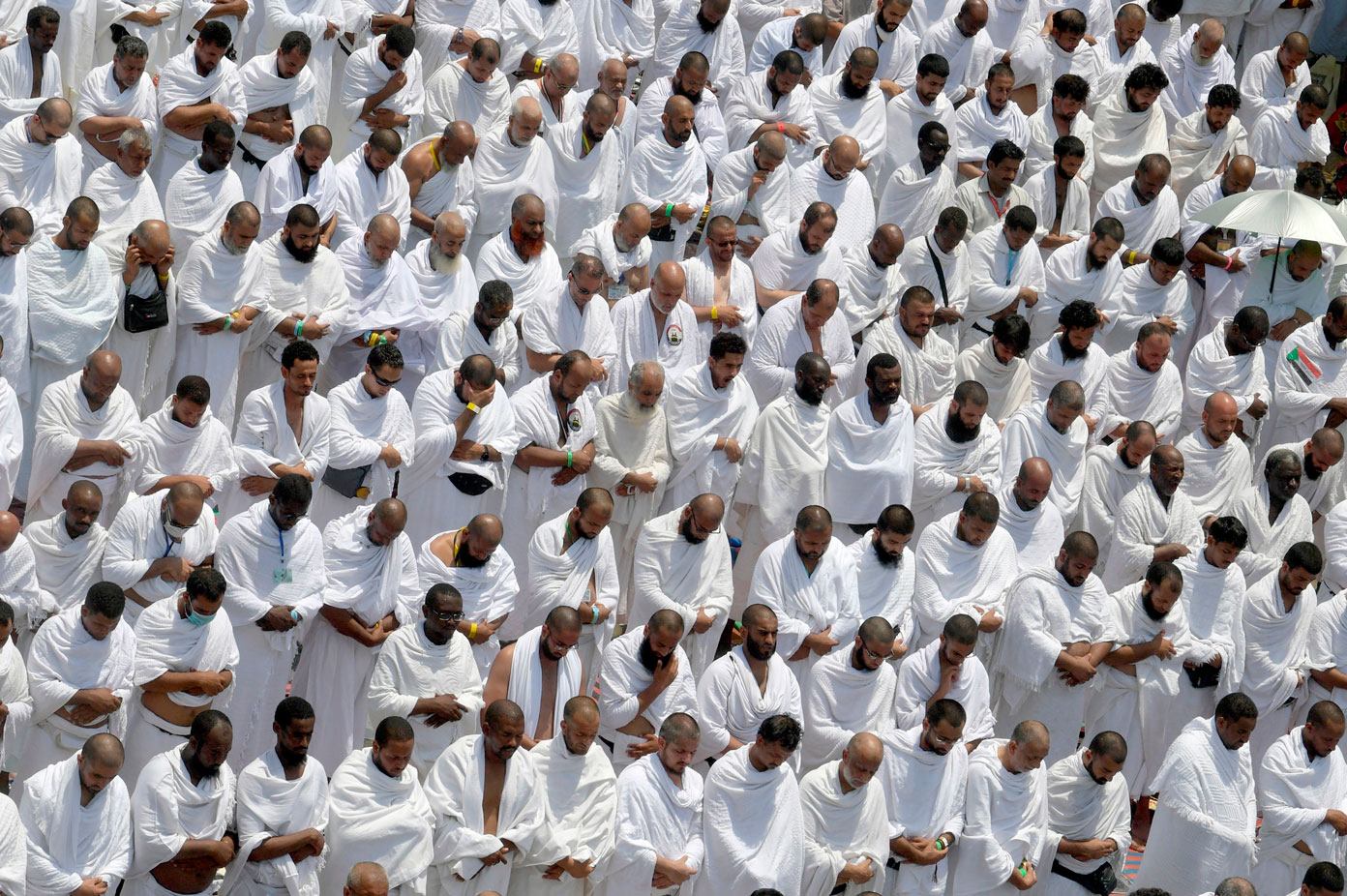Spotlight is a newsletter about underreported cultural trends and news from around the world, emailed to subscribers every Monday. Sign up here.
If you dropped by my childhood home on the last 10 days of Ramadan, you were likely to find, along with the trays of Egyptian basbousa and qatayef desserts in the living room, the television tuned to Saudi satellite channels broadcasting from the holy mosques in Mecca and Medina. My mom would be on the couch, tears in her eyes as she watched the worshippers clad in white conducting the rituals of the lesser pilgrimage, Umrah. If it was Friday, she might listen to the weekly sermon by the imam, usually Sheikh Abdul Rahman al-Sudais, whose Quranic recitations often also brought her to tears.
My mother had been to Mecca and Medina many times, for both Hajj and Umrah, but the imagery created an intense sense of longing, as if to be reunited with a long-lost love. The last 10 days of Ramadan are among the holiest on the Muslim calendar. During it falls Laylat al-Qadr, the Night of Power, when the Quran was first revealed to the Prophet. It is believed that prayers on that night erase the sins of the past year. The intensity of the devotion in those days is heightened by the broadcasts from the cradle of Islam, which the Saudis usually kept on 24/7, a remarkable showcase of their ability to organize such monumental events in the Muslim calendar.
My mind went back to those scenes from home when I read about an ostensible ban on broadcasting from the holy mosques during Ramadan. The directive was buried in an innocuous-looking series of instructions for the management and maintenance of operations of the mosques during Ramadan published on the official Saudi state news agency’s website.
The ban created a ruckus on social media and was followed with a clarification a day later that 24/7 live broadcasts from the two mosques would in fact go ahead as usual. Many of the objections noted that it was ironic that Saudi TV stations would have no issue airing episodes from soap operas and other entertainment content during the holy month while religious broadcasts would be banned at the same time.
It is difficult to glean the actual impetus behind the initial decision to ban the broadcast in the first place. The scenes from the holy mosques are emotive to a lot of observant Muslims and cement Saudi Arabia’s role as the custodian of the holy mosques and an Islamic center. They are also powerful showcases of the state’s organizational prowess in pulling off such seminal events hosting millions of faithful every year, particularly given recent restrictions and limits imposed by the kingdom on visitors due to the COVID-19 pandemic.
Perhaps it is a question of the image Saudi Arabia wishes to convey to the Muslim and broader world of what the nation stands for. That is certainly part of the rationale behind its modernization initiatives, its promotion of entertainment venues and concerts, its crown prince’s rejection of Wahhabism as the state ideology. It certainly makes sense if one is to contemplate the state instituting a national holiday for “youm al ta’sees,” the date of the founding of the modern Saudi state — a nationalistic endeavor rather than a religious one.
But I think the reaction to the initial decision shows something much deeper, and it is that the kingdom’s attempt to extricate itself from its legacy of fundamentalist religious influence in the region is one that cannot simply be attained by threatening to imprison religious televangelists unless they repent and forcing the acquiescence of the religious establishment to Mohammed bin Salman’s edicts.
Saudi Arabia’s religious influence goes beyond its official channels. It nurtured an austere interpretation of the faith that Muslims all over the region and world took home to their own societies and polities. It also influenced the orthodoxy beyond its borders, inspiring both goodness and grave evil, as any influential religious movement does. Its influence is present in myriad public and intimate aspects of life, from the language of Friday sermons to the absence of women’s faces in family albums.
That is a cultural legacy that some political arrests and directives from on high cannot erase.



